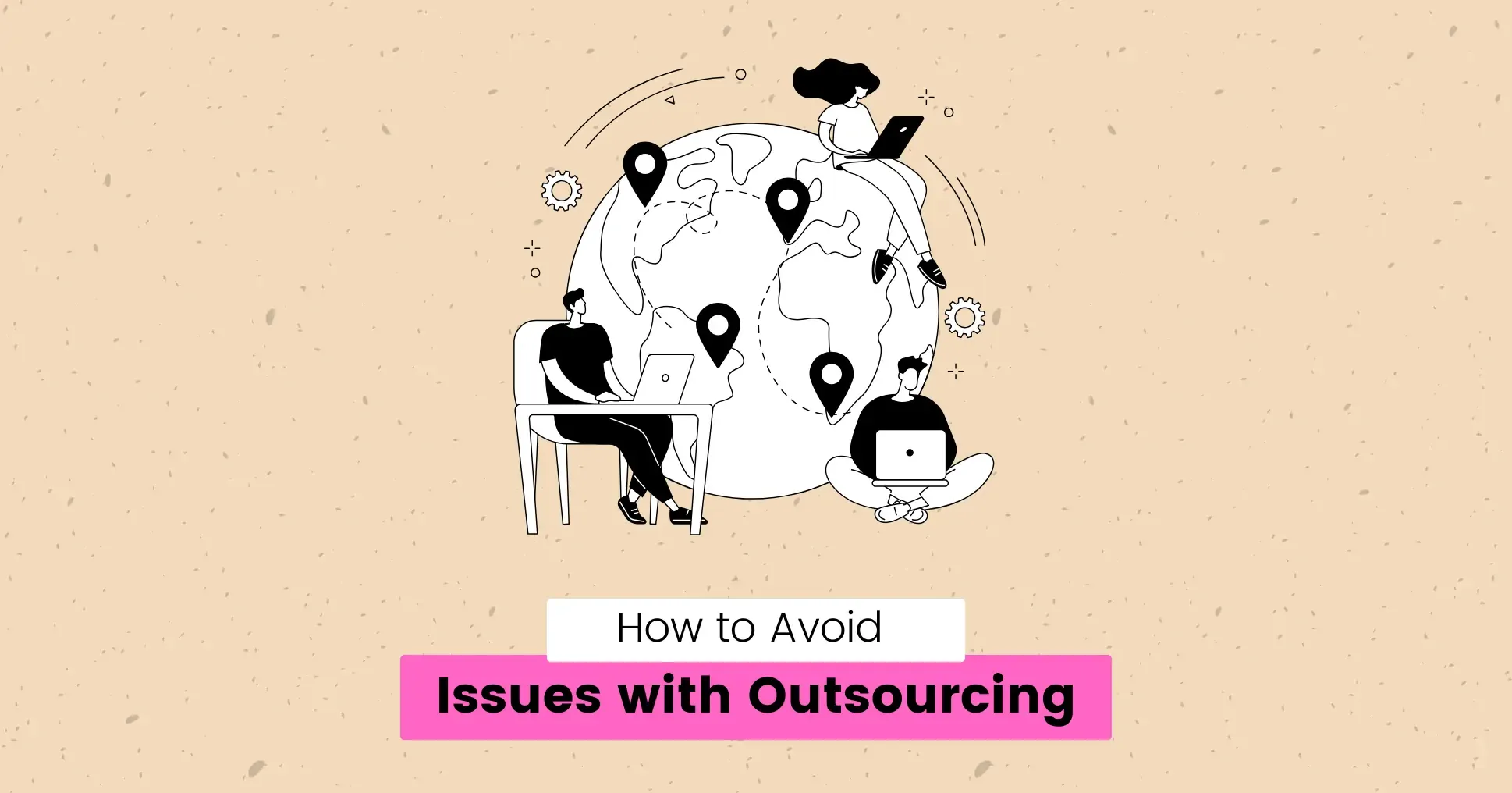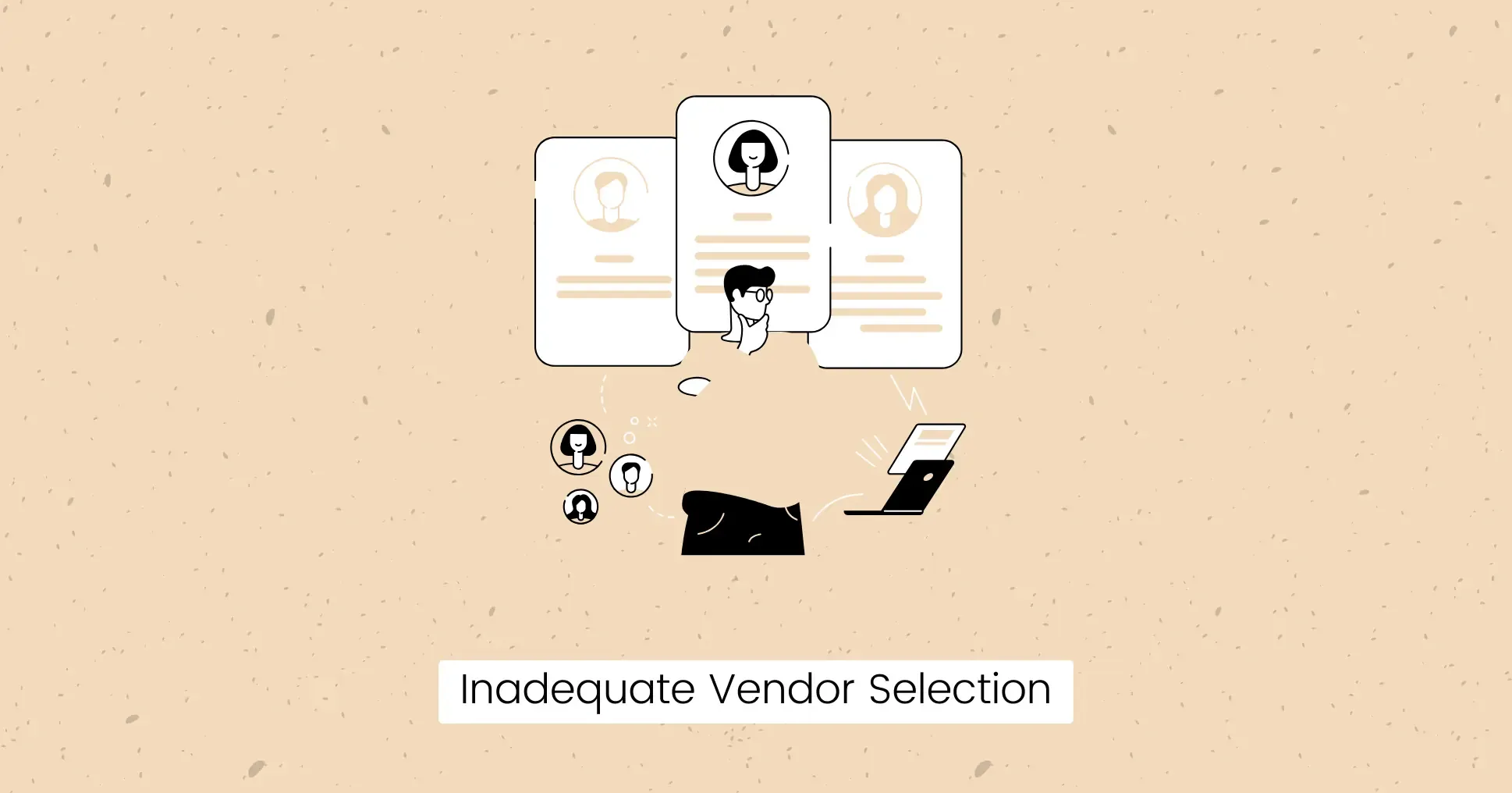10 Issues with Outsourcing and How to Avoid Them (2025)

Outsourcing software development is a good business strategy that allows you to work with top talent at lower costs.
It sounds like a perfect solution for building quality products faster without hiring an in-house team. This would allow businesses to save money and speed up projects.
However, it also comes with potential risks.
Choosing the wrong partner can lead to project delays, extra costs, and software that doesn’t meet your expectations.
Many organizations face these problems because they don’t plan properly or choose the wrong third-party vendor.
This results in drawbacks that make outsourcing cost more than it saves.
The trick is to know what to look for before signing a contract.
This guide will show you the most common outsourcing issues and how to avoid them to get quality products on time and within budget.
Let’s get started.
Why You Should Outsource Your Project
Outsourcing means hiring an external contractor to develop, manage, or improve your project instead of using an in-house team.
You work with an experienced partner who manages the development process, freeing you from the tedious tasks of hiring developers, managing projects, and maintaining the software.
Many businesses that don’t have a dedicated software team prefer outsourcing to fill their skill gaps.
They get the necessary expertise without managing every detail, enabling them to focus on their core operations while professionals handle the technical side.
Most importantly, outsourcing lets you focus on what the software should achieve instead of figuring out how to code it.
Here’s why outsourcing can be beneficial for your business:
- Niche Expertise: Good developers are expensive to hire, especially if you need a proficient team in a rare framework or industry-specific compliance. With outsourcing, you get access to specialized skills without hiring full-time.
- Scalability and Flexibility: Scale your team up or down as deadlines shift, and avoid overworking your in-house staff. You can always hire more developers during a busy period without worrying about layoffs.
- Faster Development Cycles: External teams often work across industries and bring their own set of diverse tools, skills, and processes to get the job done quickly.
- Risk Management: A good outsourcing partner shares accountability. If a project stalls, they fix it without your involvement. This helps you to focus on business goals, customers, and growth strategies instead of managing the development process.
10 Common Issues With Outsourcing
Here are the problems businesses face when they outsource and how to avoid them.
Inadequate Vendor Selection

Outsourcing works best when you select a website creation agency with expertise rather than a convincing sales pitch.
Many vendors will agree to everything you ask for. If you mention AI development , data science, cloud computing, blockchain, DevOps, or any other trending technology, they’ll claim they can do it even if they have little to no real experience.
They will assure you that your project is in good hands, but as time passes, progress slows down.
The team struggles with core features, and you get vague excuses instead of solutions.
Need Help Evaluating Your Software Options?
Our experts can help you analyze your specific needs and guide you through the decision process. Schedule a free consultation to discuss your requirements and find the best solution for your business.

How to avoid it:
- Ask for case studies, client testimonials, or working demos of similar projects.
- Test their knowledge with technical questions to see how they solve them.
- If they can’t share specifics or lack proof of experience, walk away.
Communication Barriers

One of the most common outsourcing problems is a gap in understanding between you and the external team.
Misunderstandings caused by language barriers, time zone differences, or unclear project requirements might result in project delays, wrong features, or rework, leading to increased expenses.
How to avoid it:
- Be extremely clear about what you need. List features, design preferences, and major requirements.
- Use tools like Slack or Trello to improve communication.
- Set expectations for response times and meeting schedules in advance.
- Schedule regular check-ins to keep everyone on the same page.
Legacy Debt

Hidden legacy debt is another issue that may not have immediate effects but will eventually cost you.
Outsourced teams sometimes use outdated libraries or copy-paste code from old projects or open-source repositories without checking for security holes.
They might use quick fixes to meet deadlines, but issues start to appear over time.
As a result, developers spend more time fixing technical debt than adding new features.
Strengthen Your Team with Experts
Looking for specialized skills for your software project? Our experienced team integrates seamlessly and moves your project forward. Contact us for customized solutions!

How to avoid it:
- Create a technology stack guideline and include it in your contract.
- Use tools like Snyk to scan for irrelevant dependencies and security risks.
- Check the documentation for third-party libraries to see if they are actively maintained.
Hidden Costs

Outsourcing seems like a cost-effective solution until unexpected costs start adding up.
Some vendors intentionally offer a low initial quote to win the project, knowing they can charge extra later.
They structure contracts to cover only basic functionality, leaving out:
- Essential features and bug fixes.
- Post-launch support and maintenance.
- Security and compliance.
How to avoid it:
- Make sure the contract clearly states what is covered and what would cost extra.
- Consider fixed-pricing models or milestone-based payments.
- Factor in ongoing costs for maintenance, updates, and hosting.
- Request a change order policy so any additional charges are approved ahead of time.
Cultural Differences

Outsourcing involves working with teams from different countries, each with their unique working style and approach to problem-solving.
These differences in company cultures, work ethics, and business practices can negatively impact team collaboration and project success.
For example, some vendors avoid saying “no” and use phrases like “we will try” or “it might be possible” even when something is not.
This can cause delays, false expectations, and last-minute surprises when you realize a key feature can’t be completed.
How to avoid it:
- Learn about the vendor’s work culture and how they handle feedback.
- Be direct and ask for honest opinions on deadlines and project feasibility.
- Facilitate open communication to build a long-term relationship rather than just giving instructions.
- Run a two-week test project. If they can’t adapt to your style, neither of you will survive a six-month contract.
Data Security Risks

Sharing sensitive business data, client information, or proprietary code with a third-party vendor can expose your data to potential breaches and cyber attacks.
If the vendor doesn’t follow strict security practices, your data could be stolen, leaked, or misused, resulting in financial loss, legal trouble, and damage to your reputation.
How to avoid it:
- Choose a trustworthy and reputable outsourcing company .
- Sign an NDA (non-disclosure agreement) and IP (intellectual property) protection agreement before sharing sensitive information.
- Ask the vendor about their security policies and encryption methods.
- Use role-based permissions and secure cloud storage instead of sharing files via email or chat.
Loss of Control
Sometimes, businesses feel like they have limited control over the outsourced project, which can lead to missed deadlines and changes from the original plan.
This is because many outsourcing vendors disappear for weeks after receiving the specifications, only to deliver a finished product that falls short of expectations.
There are no mid-project updates or feedback loops, and fixing a flaw means more delays and additional costs by the time you find it.
How to avoid it:
- Break the project into phases, including development, testing, bug fixes, and revisions based on feedback.
- Instead of waiting months for a full release, get small, working versions of your software after every 2–4 weeks.
- Set realistic deadlines, demand transparency, and regular updates.
Vendor Lock-In
Outsourcing web development services gives you the flexibility to get a custom solution according to your needs, but some vendors trap businesses by using proprietary tools or undocumented code that only they can manage.
If you ever want to switch vendors, expand your internal team, or scale your product, you must pay the original vendor more or start over from scratch.
How to avoid it:
- Ask the vendor to use open-source frameworks and tools that are well-documented and widely adopted by the developer community.
- Ensure your contract states that you own all source code, database access, and infrastructure.
Poor Code Quality
Sometimes, business owners lack technical knowledge, making it difficult to assess the quality of work.
Many outsourcing providers focus on **quick results **rather than writing clean, maintainable code.
The software may look fine on the surface, but the code could be messy and full of bugs, leading to frequent crashes and costly fixes in the future.
How to avoid it:
- Establish a feedback loop with your outsourcing partner to improve your software.
- Ask them to follow proper quality assurance guidelines.
- Request regular code reviews and testing reports.
Lack of Post-Launch Support
Once the project is completed, some vendors stop responding to issues, leaving you without technical support.
They might focus only on development without offering long-term support or prioritize new clients over maintaining your software.
How to avoid it:
- Include a post-launch support clause in the contract.
- Ensure the vendor provides handover documentation and training.
Final Words
Outsourcing software development is an excellent option to give your business a competitive advantage.
However, it only works when you regard vendors as partners rather than order-takers.
Partner with experienced professionals like JetCoders for cost-effective and secure solutions.
FAQs
What are the things to consider when outsourcing?
Consider vendor expertise, the costs of custom software development, contract terms, scalability, post-launch support, and long-term business goals.
When should I avoid outsourcing?
Avoid outsourcing if the project demands tight control over proprietary data or aligns closely with your core business strategy. Also, skip it if internal teams already have niche expertise or you lack the resources to manage external partnerships.